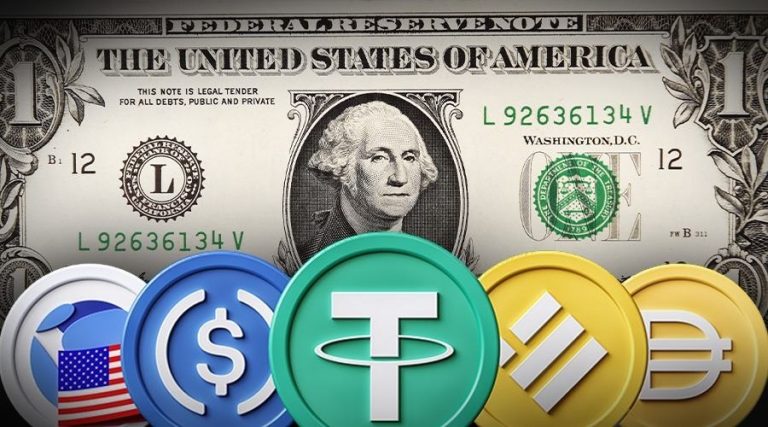
Ethena Labs has partnered with The Open Network (TON) to integrate its USDe stablecoin and Staked USDe (sUSDe), rebranded as tsUSDe, into Telegram’s ecosystem, reaching over one billion users. Announced on May 1, 2025, at Token2049 in Dubai, this move allows Telegram users to access dollar-denominated savings, payments, and DeFi applications directly within the app. The integration supports both custodial (Telegram’s native wallet) and non-custodial wallets (e.g., TON Space, Tonkeeper) and is powered by LayerZero’s interoperability protocol.
Eligible tsUSDe holders in major TON wallets can earn a 10% annual percentage yield (APY) in TON tokens on balances up to 10,000 tsUSDe, alongside Ethena’s standard rewards.
The rollout, set to occur in phases throughout May 2025, includes support for TON’s DeFi ecosystem, aiming to boost adoption in emerging markets across Asia, Africa, and Latin America. Ethena’s USDe, with a market cap of $4.7–$6 billion, ranks as the third or fourth largest stablecoin, behind Tether’s USDT, Circle’s USDC, and sometimes Sky’s USDS.
This expansion aligns with Ethena’s 2025 roadmap to compete with Tether by offering neobank-like services, including potential TON-based debit cards and Apple Pay integration. The partnership has driven a 3.5% rise in Ethena’s ENA token to $0.033 and a 1.9% increase in Toncoin to $3.22, though TON’s network activity has faced declines since mid-2024.
Register for Tekedia Mini-MBA edition 19 (Feb 9 – May 2, 2026): big discounts for early bird.
Tekedia AI in Business Masterclass opens registrations.
Join Tekedia Capital Syndicate and co-invest in great global startups.
Register for Tekedia AI Lab: From Technical Design to Deployment (next edition begins Jan 24 2026).
Ethena’s synthetic dollar approach carries risks, as analysts note potential yield compression in volatile markets, but its open collateral and risk management aim to ensure stability. This move could redefine stablecoin access, leveraging Telegram’s massive user base for mainstream crypto adoption. The integration of Ethena’s USDe stablecoin into Telegram’s TON blockchain carries significant implications across adoption, DeFi, market dynamics, and risks.
Mass Adoption Potential: Telegram’s 1 billion+ user base provides a massive platform for mainstream stablecoin adoption, particularly in emerging markets (Asia, Africa, Latin America) where mobile messaging apps dominate. Seamless access to USDe for savings, payments, and DeFi within Telegram could drive crypto use among non-technical users, bridging Web2 and Web3.
DeFi Ecosystem Growth: TON’s DeFi ecosystem gains a major stablecoin with USDe’s $4.7–$6 billion market cap. The 10% APY incentive for tsUSDe holders and integration with wallets like TON Space and Tonkeeper could boost liquidity in TON-based DeFi protocols, fostering new applications and increasing transaction volume.
Competitive Pressure on Stablecoins: Ethena’s expansion challenges Tether (USDT) and Circle (USDC), especially with plans for neobank-like services (e.g., debit cards, Apple Pay). USDe’s synthetic dollar model, if perceived as stable, could erode Tether’s dominance in markets prioritizing accessibility and yield.
Market and Token Impact: The partnership has already lifted Ethena’s ENA token (+3.5% to $0.033) and Toncoin (+1.9% to $3.22). Increased USDe usage on TON could sustain upward pressure on ENA, while TON’s network activity may rebound from its 2024 decline, enhancing Toncoin’s value proposition.
Regulatory and Stability Risks: USDe’s synthetic dollar, reliant on collateral and yield strategies, faces risks of yield compression or instability in volatile markets. Regulatory scrutiny of stablecoins could intensify, especially as Ethena targets mainstream financial services. TON’s custodial wallet reliance may also raise concerns about user control and compliance.
Interoperability and Innovation: LayerZero’s role enables cross-chain functionality, potentially setting a precedent for stablecoin integrations across other blockchains. This could accelerate innovation in DeFi and payment systems, but also introduces technical risks tied to interoperability protocols. This move could redefine stablecoin accessibility and DeFi on TON, but its success hinges on managing risks and sustaining user trust in USDe’s stability.



